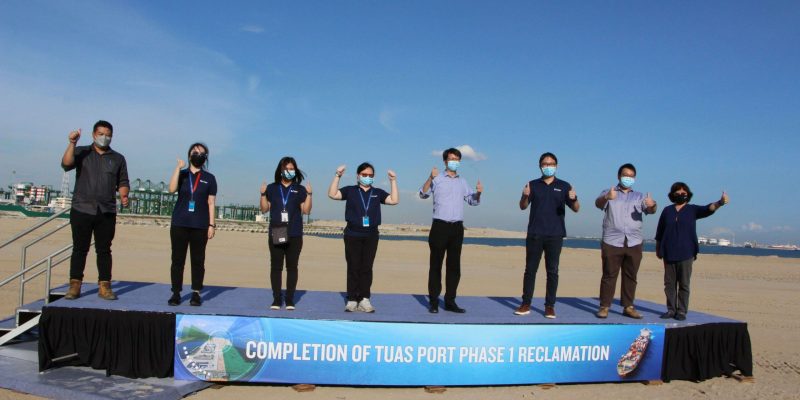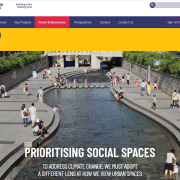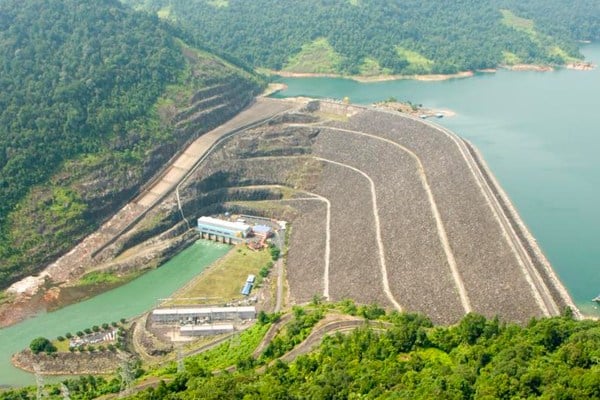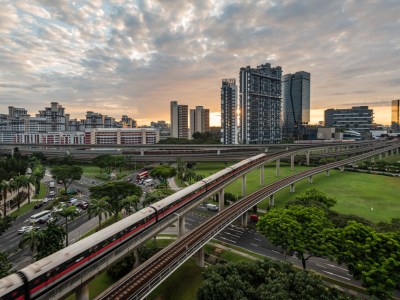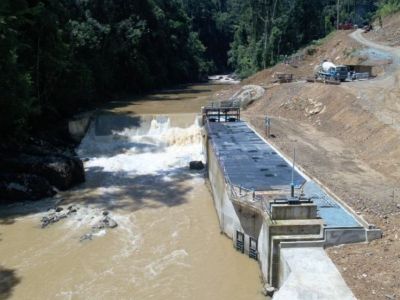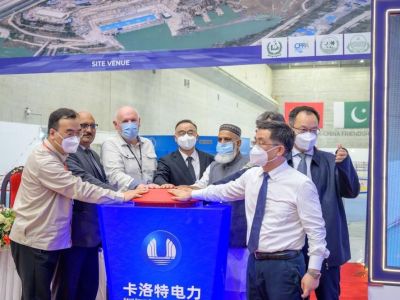SJ’s Coastal Engineering team celebrating the completion of the reclamation works for Tuas Terminal Phase 1 (also pictured below with GCEO Wong Heang Fine, standing second from right).
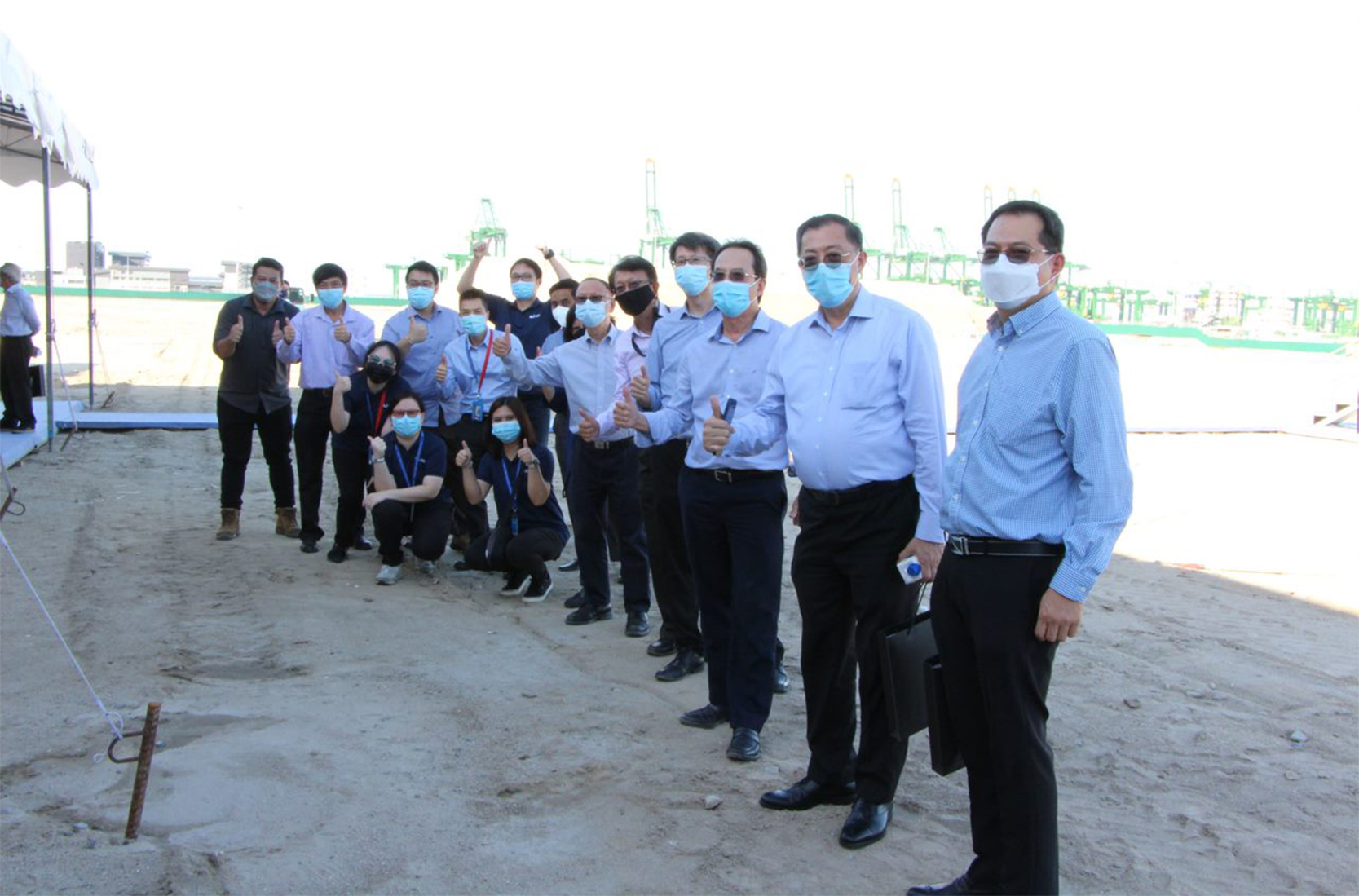
The completion of the massive reclamation works for the first phase of Tuas Terminal was observed at a special ceremony on 30 Nov, graced by Singapore’s Transport Minister S Iswaran. This marked a significant milestone for Singapore’s ambitious move to consolidate the container terminals to the west of the island and double the current container handling capacity to 65 million TEUs* when all phases are completed in the 2040s, at a cost of over S$20 billion.
With long linear berths and a design depth of -23m at chart datum*, Tuas Terminal will be able to accommodate mega container ships exceeding 450m in length.
According to a report in The Straits Times, Mr. Iswaran said that Phase 1’s completion was especially hard-earned due to disruptions caused by the Covid-19 pandemic in the last two years. Work on Phase 1 began six years ago, involving more than 450 companies and 34 million hours of work. The minister said that the mega port will boost stronger maritime connectivity for Singapore, enabling faster imports and exports at a lower cost.
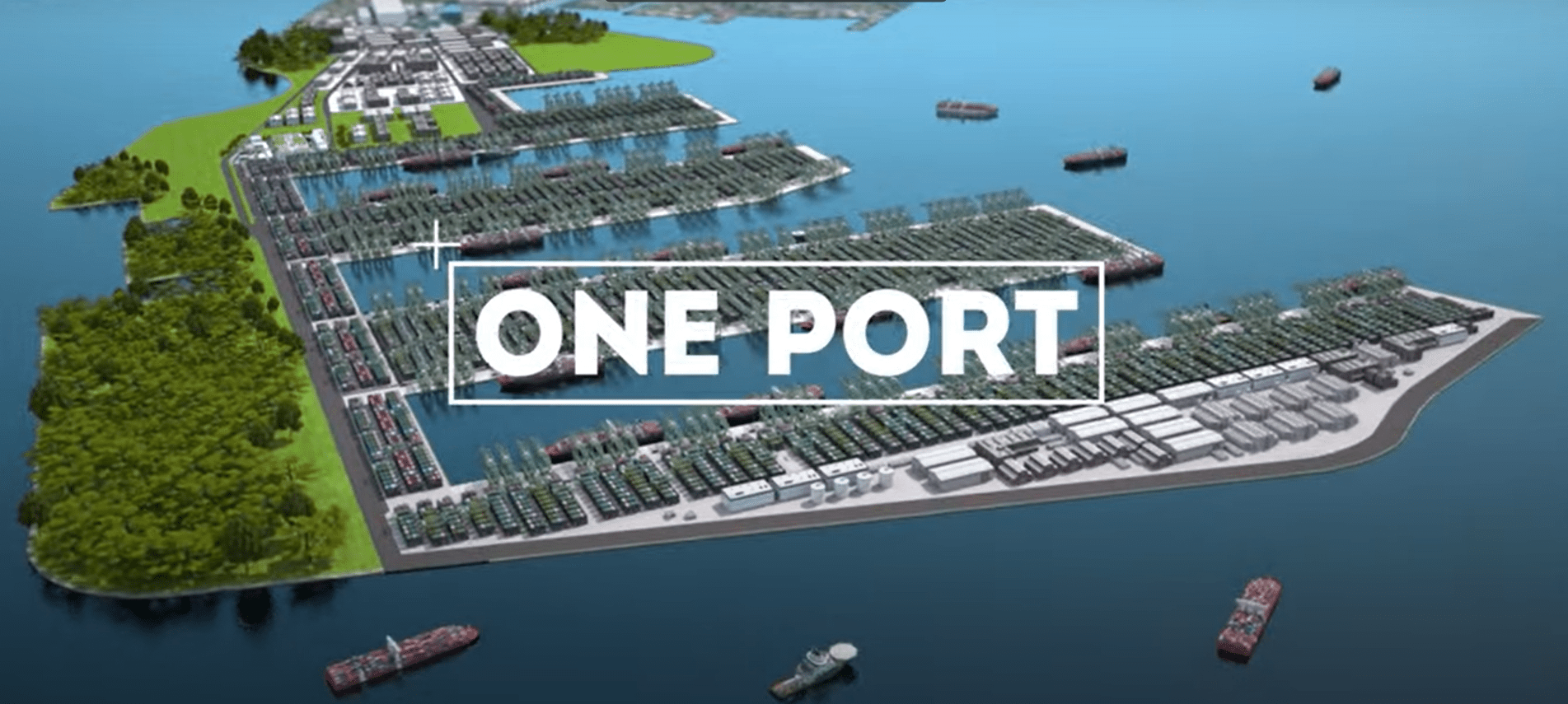
A screengrab from a Youtube video by the Maritime Port Authority of Singapore, showing how Tuas Terminal, Singapore’s next-generation port, is being built.
Significance of Tuas Terminal
Tuas Terminal is an engineering feat with many innovative features that increases productivity, optimize land use, improve safety and security, and enhance sustainability. Some examples:
- The design adopts the concept of the circular economy – with massive re-use of dredged and excavated materials as reclamation fill and caisson infill materials. This results in significant material cost savings of S$1 billion.
- The use of innovative caisson design for the wharf structures helps to improve productivity and quality as the caissons are of standard sizes and prefabricated in a controlled environment on site. The finger-piers (as seen in the artist’s impression of the finalized port above) with caisson quay walls were adopted to maximize the limited land and sea space.
Surbana Jurong’s role
SJ’s Coastal Engineering was first appointed by Maritime and Port Authority of Singapore (MPA) in 2012 when Tuas Terminal Phase 1 (TTP1) reclamation project was first conceptualized.
The team worked on the planning of the new port, envisioning the type of future vessels that it may have to cater for. They designed the large caisson structures that would hold the reclamation as well as serve as a rigid quay wall for the largest container vessel that the team could envisage. Planning included the infrastructure services required for the new port, the reclamation scheme, and the ground improvement required by the port operators.
In 2015, SJ’s Coastal Engineering won a separate contract by MPA for the construction supervision, project management, and contract administration of TTP1.
The team oversaw the creation of 8.6km of caissons wharf, reclamation involving almost 88 million cubic meters of material, dredging of the navigational channel and wharf basin, and soil-improving 414ha of land for container port use. According to the press release by the Maritime and Port Authority, Phase 1 has 21 deep-water berths that can handle 20 million twenty-foot equivalent units (TEUs) annually. Singapore’s port operator, PSA, is expected to operationalize the first two berths in Phase 1 by the end of 2021.
Watch this video for the exciting story of how Phase 1 was completed. Share our LinkedIn post.
*A TEU or Twenty-foot Equivalent Unit is a unit of measurement used to determine cargo capacity for container ships and terminals.
Chart Datum refers to the level of water that charted depths shown on a nautical chart are measured from.


